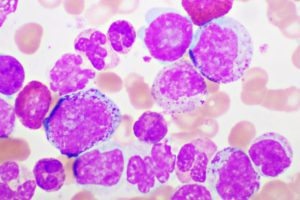What is GAD?
William is 38 years old. Even though he describes himself as a born warrior, lately, he has been experiencing uncontrollable worry about almost everything in his daily life. While everyone worries about matters such as health, work, and family, William’s concerns are often debilitating.
He tries to battle his anxiety by constantly seeking reassurance and excessive information. He also double-checks even the most minute tasks. As if this was not enough, the physical toll on him is also noticeable. He suffers from an array of discomfort including restlessness, irritability, and sleep disturbance.
William’s case study was published in Elsevier’s Cognitive and Behavioral Practice in August 2013. While his symptoms are one of a kind, he is not alone. His dilemma is due to a condition known as Generalized Anxiety Disorder.
According to the NHS, Generalized Anxiety Disorder (GAD) is a long-term condition that causes the person to feel anxious about a wide range of situations and issues, rather than a single specific event.
The National Institute of Mental Health specifies the duration. It states that the symptoms must persist for at least six months to be called a GAD case. People with GAD do not only suffer from excessive stress and worry, the condition tends to impair their social, occupational, and other aspects of life.
Demographics of Generalized Anxiety Disorder
How Common Is GAD?
- About 4% of the global population come across GAD at some point in their lives.
- 5-6% of Americans suffer from GAD once in their lifetime.
- According to a study published by JAMA Psychiatry, GAD has a global prevalence of 3.7%.
- The same study observes that the incidence of GAD is higher in high-income countries than the low and middle-income ones.
Who is More Prone to Get GAD?
- Anyone can have GAD, but women are twice more prone to develop this condition.
- Studies have shown that women from some particular demographics, such as American-Indian and Alaskan Natives are more at risk than others.
Which Age is More Vulnerable to GAD?
Usually, GAD develops from young adulthood through the mid-50s with a median age of 31 years.
What are the Risk Factors of GAD?
There is no single cause of GAD. Like many mental health conditions, GAD stems from a complex interaction of biological factors and environmental stressors. Risk factors include:
- Prolonged exposure to stressful events in life.
- Chronic medical illnesses or other mental health disorders.
- Family history of anxiety disorders.
- Certain personality traits.
Symptoms of Generalized Anxiety Disorder
People with GAD tend to stress about everything around them. This is often associated with a constant nagging feeling that something bad will happen and they will not be prepared. There is also excessive worry about even the simple daily chores such as missing an appointment.
Other symptoms include:
- Feeling upset easily
- Feeling on edge all the time
- Rapid heartbeat
- Dry mouth
- Irritability
- Muscle tension
- Sleep disturbance
- Exhaustion
- Inability to concentrate
- Recurrent stomach aches or diarrhea
- Neurological symptoms such as numb or tingling extremities
Often GAD is associated with other anxiety disorders such as panic disorder and phobias.
Reaching the Diagnosis
Generalized Anxiety Disorder is a clinical diagnosis. However, the doctor may advise lab tests and investigations to exclude the differential diagnoses.
The approach to diagnosing a case of GAD involves asking questions and taking a thorough medical and psychiatric history. Depending on the severity and duration of symptoms, it is then determined whether the case is a specific anxiety disorder or GAD. For a person to be diagnosed with GAD his symptoms have to be severe enough to hamper his daily living and must persist for at least 6 months.
The diagnostic criteria for GAD can be found here: GAD DSM 5 criteria.

Differential Diagnosis of Generalized Anxiety Disorder
Certain physical illnesses lead to symptoms similar to GAD. Therefore, a careful evaluation must be done to make sure that the person is not suffering from any underlying physical condition. Some common conditions that can be mistaken for GAD are:
Thyroid Disorder
Thyroid conditions can produce GAD-like features e.g. fine tremor, rapid heart beat, sweating, rapid breathing etc. Thyroid Function Tests are done to exclude this.
Psychiatric disorders
Different types of phobias, panic disorder, and sometimes depression have some features common with GAD. Therefore, a physician must rule out other psychiatric conditions before diagnosing GAD.
Substance Abuse
Substance abuse can lead to symptoms that look like GAD. Doctors carry out urine drug screens to make sure the person has not fallen victim to substance abuse. The common substances are Ecstasy, Amphetamine, Cocaine etc.
Treatment Approaches
Generalized anxiety disorder is managed with medications and cognitive behavioral therapy (CBT).
Medication Options
A selective serotonin reuptake inhibitor (SSRI) or a serotonin-norepinephrine reuptake inhibitor (SNRI) is often the preferred drug for treating GAD. These take a while to respond but produce greater symptom relief in the long run.
Common SSRIs are:
- Fluoxetine
- Sertraline
Common SNRIs are:
- Venlafaxine
- Duloxetine
SSRI and SNRI therapy may result in certain side effects such as:
- Weight gain
- Erectile dysfunction
- Insomnia
There are other drug options such as Tricyclic Antidepressants and Buspirone. However, these are associated with more physical side effects than SSRIs and SNRIs.
Cognitive Behavioral Therapy (CBT)
Cognitive Behavioral Therapy is offered by a psychiatrist or mental health specialist. Its aim is to help patients with GAD recognize their misperceptions better. This also helps them learn different approaches to respond to anxiety-provoking events.
Prognosis
According to Harvard Health Publishing, GAD has a promising prognosis. Half of the patients experience improvement in their symptoms within 3 weeks of treatment. Almost 80% of patients improve within 9 months.
Living with GAD: The Healthy Habits
Generalized Anxiety Disorder may be creepy, but a positive attitude and some healthy lifestyle modifications can work wonders in combating this condition. Some good daily habits that keep GAD in check are:
- Exercise and meditation
- Healthy diet
- Getting plenty of sleep
- Avoiding over the counter medications and alcohol
- Avoiding caffeine-containing products
- Opting for relaxation techniques such as deep breathing
EndNote
Generalized anxiety disorder may be debilitating in many ways. However, a well-planned combination of medication, psychotherapy, and lifestyle modification can help a person keep GAD at bay. If you think you or a close one may be struggling with anxiety issues, talk to your doctor. Help is right there, you just have to reach out.



